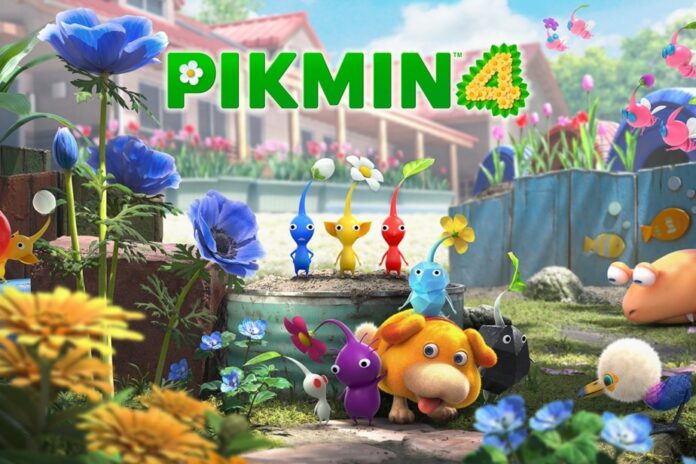Playing Pikmin 4 is like stuffing yourself with candy, without the heartache. But beware: behind this childish game of controlling happy, multicolored plants hides a fearsome mechanism, more complex than it seems.
It’s hard to believe there hasn’t been a new installment in Nintendo’s Pikmin franchise for 10 years now, back in the days of the unloved WiiU. We were treated to a refresh of the last episode in 2020 with Pikmin 3 Deluxe for the Switch, and high definition versions of episodes 1 and 2 are promised this fall.
Pikmin 4, which hits shelves this Friday, July 21, follows the franchise’s same premise since 2001. Explorers land on an unknown planet and discover a colorful flora and fauna, including the enthusiastic and helpful Pikmin. These are a “mysterious mix of plant and animal” and come in different colors, each with their own abilities. It is by cultivating and controlling them that you can solve puzzles, collect treasures, defeat enemies and advance in the story.
The mission, in 2023, is to explore an unknown planet on which Captain Olimar, the character of the first Pikmin game, has crashed. A team of six rescuers is also missing. It is up to you, character whose appearance and name you decide at the start, to find all these people. It can be played alone or in two-player co-op.
The first helper you will find is a dog, Otchin. He can ram and smash through walls, carry you, pull objects, and gain other powers as he earns “motivation” points, such as rescuing a castaway.
You will soon spot the crashed ship, the Sheperd, which needs a particular element, Lumium, to regain its abilities. You will especially find your first Pikmin, the red ones, which can be grown in an onion with seeds collected from flowers.
Reds resist fire, blues love water, yellows neutralize electricity, “ice” freezes enemies and water surfaces, glows light up caves, purples are very strong, and “rocks” are indestructible .
Everything is in place for very imaginative combinations that will allow you to carry out your missions. The mechanics here are well-oiled, complex as one might wish, but supported by guides and gradual learning. It is especially lightened by very good-natured animations, with the Pikmin humming and hopping everywhere.
Every morning, you go on a mission and you must absolutely return to the base at nightfall or risk losing your Pikmin. You group them around you, whistling at them, but risk losing those who stray. You choose a certain number of them, but you can only have three colors. You have sectors to explore, more and more as the story progresses, in which you can find castaways and accumulate rewards.
The basic method is relatively simple: you come to a flower, for example, which tells you how many Pikmin it takes to uproot and carry it. You send them, they do the work and move to your personal shuttle, the Beagle. The flowers contain seeds that will produce new Pikmin. Some items require more Pikmin or help from Otchin, will yield Lumium or raw materials used for construction.
The rescuers you find will also add their talents to help you: the captain will train Otchin for new tricks, the engineer will invent gadgets, the operator keeps you informed of the progress of the missions. Other castaways who arrived on the planet by chance will join the group.
Of course, we come across challenges that require a little more savvy than sending the sufficient number of Pikmin. Some of your little employees will die in battle, others will not be able to cross certain obstacles, certain colors will have to be favored for specific sectors or challenges. Some missions are simply impossible to complete without having the necessary talents, which will appear later. Others only asked for enlightenment or sleight of hand to harvest treasure, rescue a castaway, or access a platform that seemed unreachable.
And if you mess up and your Pikmin drop like flies, don’t panic: we’ve included a new Rewind feature.
A central philosophy in this game: what is called “Dandori”, which is defined as “planning your actions in advance to work efficiently”. To learn better, you will be offered Dandori challenges, alone or against a partner, which consist of collecting the most objects in the allotted time.
Very few things to reproach this very entertaining, almost endearing game. Well, the dialogues are always in gibberish invented by Nintendo and subtitled. The transitions from one board to another are a bit long, the Switch not being a speed monster. The dizzying accumulation of various tricks, tools, command suites, and powers will mean that you’ll probably just be reusing the same ones often.
But he realizes the most important thing: you don’t see the time passing with this nice game that entertains while soliciting the neurons.















